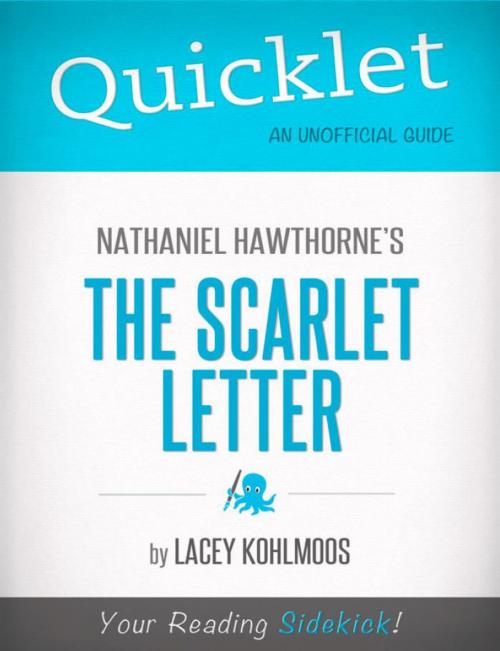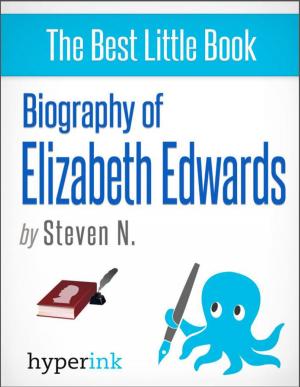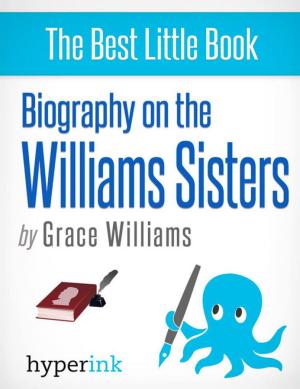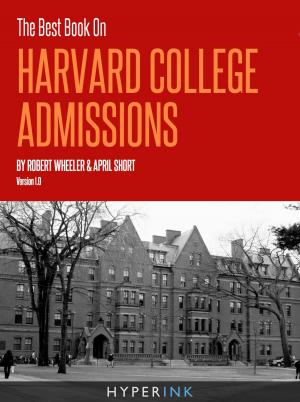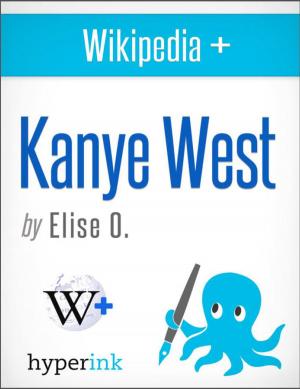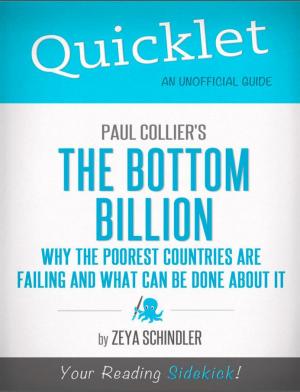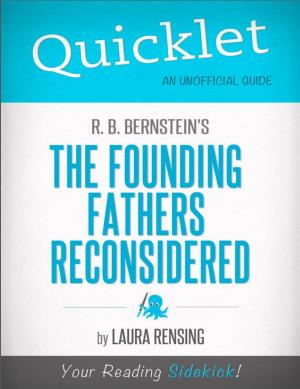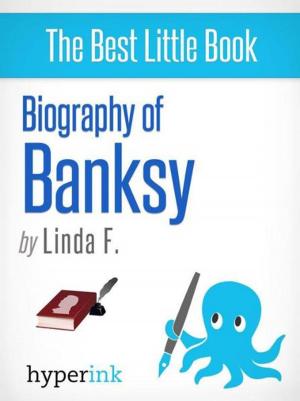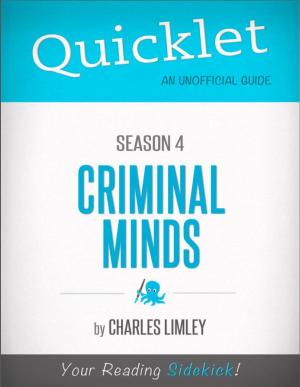Quicklet on Nathaniel Hawthorne's The Scarlet Letter
Nonfiction, Reference & Language, Study Aids, Book Notes, Art & Architecture, General Art| Author: | Lacey Kohlmoos | ISBN: | 9781484006542 |
| Publisher: | Hyperink | Publication: | February 16, 2012 |
| Imprint: | Hyperink | Language: | English |
| Author: | Lacey Kohlmoos |
| ISBN: | 9781484006542 |
| Publisher: | Hyperink |
| Publication: | February 16, 2012 |
| Imprint: | Hyperink |
| Language: | English |
ABOUT THE BOOK
I was in sixth grade the first time I read The Scarlet Letter and I didn’t get it. Sure, I may have been a little young to delve into a scandalous gothic romance about sin and guilt, but I was an overachiever with a teacher who liked to challenge me. I slogged through this first reading of the literary masterpiece without understanding the love story or any of the symbolism for which Hawthorne is famous. Upon reading the last haunting words, I slammed the book shut, looked at my mom and said, “Is that it?”
My mom had loved The Scarlet Letter when she read it in high school. She gushed about romance and tragedy, and told me about her friend who read ahead because she couldn’t stand not knowing the identity of Pearl’s father. Perhaps I come from a more cynical generation, but it was pretty obvious to me at the age of 11 who Hester hooked up with – the only major male character who wasn’t old. Duh!
When I read The Scarlet Letter again as a slightly wiser 16-year-old, however, I discovered what my mom really meant by “romantic.” This was a seriously sexy book. Once I gained a better understanding of Hawthorne’s prose, my raging hormones picked up on all the sex references – of which there are many. In English class we focused on the meaning of sin and what exactly that letter “A” symbolizes, but what my classmates and I talked about at lunch was how scandalous it was that Hester had sex with a minister.
Re-examining The Scarlet Letter as a college women studies major, I saw the text as a scathing condemnation of the double standard regarding sex. We all know what this means – promiscuous girls are sluts, while promiscuous guys are studs. Perhaps Hawthorne was merely commenting on stigma and hypocrisy, but I found myself applauding his insights into the female condition.
So what is The Scarlet Letter? A not too mysterious mystery? A scandalously sexy romance? A commentary on societal norms? To me, it is all of the above.
MEET THE AUTHOR
Lacey is a writer, traveler and lover of the arts. After graduating from the University of Virginia with a BA in Drama & the Studies of Women and Gender, the only thing she knew for sure was that she wanted to travel. So, she embarked on a 10 ½ month round-the-world trip. Lacey then traveled to Costa Rica where she spent one year teaching elementary school English in a small mountain town. Throughout her two years of travels, she has always kept a blog.
In 2009, Lacey earned her MA in International Development and began working for the National Democratic Institute where she became the Citizen Participation Team’s primary writer. After living and traveling in 26 different countries, she has settled down for awhile in Leadville, CO where she spends my days skiing, hiking, taking pictures and writing. Lacey loves writing about travel, gender issues, international development and the arts.
EXCERPT FROM THE BOOK
Nathaniel Hawthorne was a patriotic baby born in Salem, Massachusetts on July 4, 1804. When Hawthorne was just four years old, his father died of yellow fever while captaining a ship off the coast of Suriname. This led his mother to move young Hawthorne and his sisters to the Manning House on Herbert Street, which Hawthorne always referred to as “Castle Dismal.”
Hawthorne’s uncles sent him to Bowdoin College in 1821, and despite some typically wild college behavior, he graduated with a Bachelor of Arts in 1825. While at Bowdoin, Hawthorne became close friends with Horatio Bridge and future U.S. President Franklin Pierce – both of whom later provided financial and moral support for his writing.
Following college, Hawthorne floated from job to job, never taking up a profession because he knew that he wanted to be a writer. Despite this, his attempts at writing were largely unsuccessful.
Buy a copy to keep reading!
ABOUT THE BOOK
I was in sixth grade the first time I read The Scarlet Letter and I didn’t get it. Sure, I may have been a little young to delve into a scandalous gothic romance about sin and guilt, but I was an overachiever with a teacher who liked to challenge me. I slogged through this first reading of the literary masterpiece without understanding the love story or any of the symbolism for which Hawthorne is famous. Upon reading the last haunting words, I slammed the book shut, looked at my mom and said, “Is that it?”
My mom had loved The Scarlet Letter when she read it in high school. She gushed about romance and tragedy, and told me about her friend who read ahead because she couldn’t stand not knowing the identity of Pearl’s father. Perhaps I come from a more cynical generation, but it was pretty obvious to me at the age of 11 who Hester hooked up with – the only major male character who wasn’t old. Duh!
When I read The Scarlet Letter again as a slightly wiser 16-year-old, however, I discovered what my mom really meant by “romantic.” This was a seriously sexy book. Once I gained a better understanding of Hawthorne’s prose, my raging hormones picked up on all the sex references – of which there are many. In English class we focused on the meaning of sin and what exactly that letter “A” symbolizes, but what my classmates and I talked about at lunch was how scandalous it was that Hester had sex with a minister.
Re-examining The Scarlet Letter as a college women studies major, I saw the text as a scathing condemnation of the double standard regarding sex. We all know what this means – promiscuous girls are sluts, while promiscuous guys are studs. Perhaps Hawthorne was merely commenting on stigma and hypocrisy, but I found myself applauding his insights into the female condition.
So what is The Scarlet Letter? A not too mysterious mystery? A scandalously sexy romance? A commentary on societal norms? To me, it is all of the above.
MEET THE AUTHOR
Lacey is a writer, traveler and lover of the arts. After graduating from the University of Virginia with a BA in Drama & the Studies of Women and Gender, the only thing she knew for sure was that she wanted to travel. So, she embarked on a 10 ½ month round-the-world trip. Lacey then traveled to Costa Rica where she spent one year teaching elementary school English in a small mountain town. Throughout her two years of travels, she has always kept a blog.
In 2009, Lacey earned her MA in International Development and began working for the National Democratic Institute where she became the Citizen Participation Team’s primary writer. After living and traveling in 26 different countries, she has settled down for awhile in Leadville, CO where she spends my days skiing, hiking, taking pictures and writing. Lacey loves writing about travel, gender issues, international development and the arts.
EXCERPT FROM THE BOOK
Nathaniel Hawthorne was a patriotic baby born in Salem, Massachusetts on July 4, 1804. When Hawthorne was just four years old, his father died of yellow fever while captaining a ship off the coast of Suriname. This led his mother to move young Hawthorne and his sisters to the Manning House on Herbert Street, which Hawthorne always referred to as “Castle Dismal.”
Hawthorne’s uncles sent him to Bowdoin College in 1821, and despite some typically wild college behavior, he graduated with a Bachelor of Arts in 1825. While at Bowdoin, Hawthorne became close friends with Horatio Bridge and future U.S. President Franklin Pierce – both of whom later provided financial and moral support for his writing.
Following college, Hawthorne floated from job to job, never taking up a profession because he knew that he wanted to be a writer. Despite this, his attempts at writing were largely unsuccessful.
Buy a copy to keep reading!
